Sarah Wise
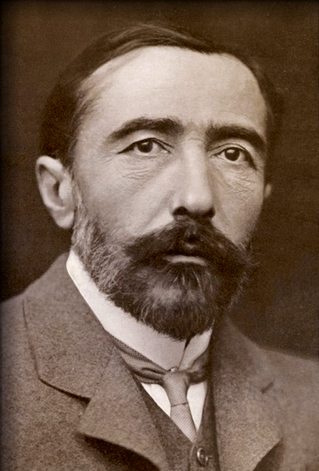
The Secret Agent was Joseph Conrad’s delayed response to the real-life 1894 Greenwich Mystery — the accidental death of 26-year-old Martial Bourdin, who was fatally injured while carrying a bomb across Greenwich Park.
Conrad had in fact forgotten all about this once notorious incident, until his friend, the author Ford Madox Ford, brought it up one day in conversation, in 1906. Conrad later, in 1920, wrote: ‘We recalled the already old story of the attempt to blow up the Greenwich Observatory; a blood-stained inanity of so fatuous a kind that it was impossible to fathom its origin by any reasonable or even unreasonable process of thought . . . I pointed all this out to my friend, who remained silent for a while and then remarked in his characteristically casual and omniscient manner: “Oh, that fellow was half an idiot. His sister committed suicide afterwards.” ’
These bare statements set Conrad off on a train of thought that eventually led to his writing the novel, foregrounding the domestic tragedy of the Bourdin incident against a background of revolutionary types whom Conrad despised.
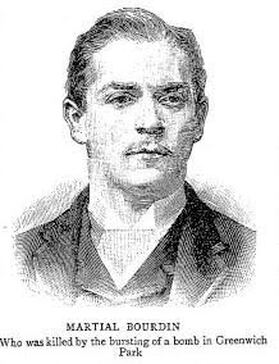 This was also to be Conrad’s great London novel. He had established himself with fiction that demonstrated an astonishing geographical range and scope —his long years working as a merchant seaman gave him a truly global perspective. At last, it was time to turn his gaze upon the Imperial capital.
This was also to be Conrad’s great London novel. He had established himself with fiction that demonstrated an astonishing geographical range and scope —his long years working as a merchant seaman gave him a truly global perspective. At last, it was time to turn his gaze upon the Imperial capital.
London in The Secret Agent is an unruly city, where even the street numbering has gone awry, as Mr Verloc finds when he visits the Embassy for his dressing down by Mr Vladimir. Mr Vladimir is furious that the English are so tolerant of having political extremists in their midst. He intends to wake the English from their complacency — and Mr Verloc, from his constitutional laziness — by arranging an outrage that will at last force the police and the government into interning or expelling the foreign dissidents who have flocked to London.
In despair at English passivity, insularity and lack of vigour, Mr Vladimir believes that the English wouldn’t even blink if the Anarchists set the whole Continent on fire: the English ‘will not look beyond their own backyard…[and] they believe that in some mysterious way, science is at the source of their material prosperity.’ That is why the ‘absurd ferocity’ of blowing up an icon of astronomy will have far more impact than the killing of dozens of the ‘imbecile bourgeoisie’, as Mr Vladimir calls them.
The revolutionaries are each imagined as horrific physical specimens — monstrosities, in fact — described in both animalistic as well as spectral, ghostly metaphors. In chapter 2, as they congregate at the Verlocs’ home, Stevie is the only individual who seems human — a huge irony, because Comrade Ossipon and his kind believe him to be not fully human at all. The heartlessness of constantly referring to Stevie as a ‘degenerate’ and an ‘idiot’ shows that the revolutionaries are significantly less humane than the bourgeoisie they wish to overthrow.
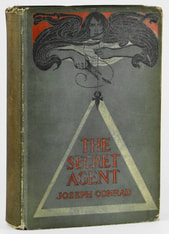 Most of the males in this book (especially Ossipon, Yundt and Michaelis) live off women’s money and women’s compassion; so does Mr Verloc, with regard to the comfort provided by Winnie, though he is unaware that the real reason she married him is to provide a safe haven for Stevie. Mr Verloc’s day job, selling pornography, is another way of living off women. As well as being parasitic, the revolutionaries are all embittered, useless and lazy — scuttling, skulking beasts, burrowed in among their fellow men, to whom they mean huge harm. The Professor, for instance, repeatedly insists upon his own power, strength and will, but in reality is a bespectacled little freak in a back bedroom in Islington.
Most of the males in this book (especially Ossipon, Yundt and Michaelis) live off women’s money and women’s compassion; so does Mr Verloc, with regard to the comfort provided by Winnie, though he is unaware that the real reason she married him is to provide a safe haven for Stevie. Mr Verloc’s day job, selling pornography, is another way of living off women. As well as being parasitic, the revolutionaries are all embittered, useless and lazy — scuttling, skulking beasts, burrowed in among their fellow men, to whom they mean huge harm. The Professor, for instance, repeatedly insists upon his own power, strength and will, but in reality is a bespectacled little freak in a back bedroom in Islington.
(Detective Sergeant Patrick McIntyre of Special Branch did not agree with Conrad, recalling fondly in his memoirs Twenty-Five Years of Detective Life: ‘I am certain that although the Anarchists talked wildly and advocated schemes that seemed utterly impracticable to the ordinary observer, they were all quiet and peaceful men, and well disposed to their fellow creatures in general. . . According to my observation, in spite of their tenets, they were a good-hearted and sympathetic class of the community. Nearly all of them were foreigners who were being sweated in workshops. There was, however, a small sprinkling of English working men who had mostly suffered somewhat at the hands of the capitalists.’)
Conrad’s sour view of political agitators was not cheaply arrived at. His own father, Apollo Korzeniowski, had been a Polish revolutionary and patriot, whose activities against Russian rule (administered by Vladimir Nabokov’s grandfather, no less) had caused the family to go into exile, removing Conrad’s chances of a proper education and a good station in life. Conrad adored his parents, and admired his father, but later on he wrote of ‘the absurd illusions common to all exiles. . .a class that has been under the ban for years lives on its passions and on prejudices, whose growth stifles not only its sagacity but its visions of reality.’
Personal impulses create and drive the plot of the novel, despite the windy declarations of violence made by the revolutionaries. Mr Vladimir’s impatient scorn, Winnie’s lack of curiosity, Mr Verloc’s laziness, Winnie’s and her mother’s over-gratitude to Mr Verloc — all combine and bring about the death of Stevie.
Winnie is so complacently uninterested in the world around her that she has never wondered what her husband’s true feelings are towards her younger brother; nor what sort of activities Mr Verloc’s job may thrust into their domestic realm. She habitually ignores ‘the inwardness of things’, writes Conrad: ‘Winnie’s philosophy consisted in not taking notice of the inside of facts.’
On one level, this is a comedy of errors, underscored by Conrad’s frequent use of the mock-heroic. Nobody is really ‘getting’ anyone else in this book — because they are self-absorbed, or unreflective, or lazy, or selfish, or, in Stevie’s case, following instructions: he has been ordered to adore Mr Verloc by the two women who care for him, and so, of course, he obeys.
Throughout the book, people are puzzled by Stevie’s condition, and they attribute traits and motives to him that he does not have. They impose upon him — and no one imposes upon him more than Mr Verloc.
As Chief Inspector Heat later looks down at Stevie’s remains, there is the phrase ‘Raw meat for a cannibal’s feast’, which harks back to Stevie’s horror as he overhears the revolutionaries’ talk of cannibalism at the end of chapter 3. The horror has happened to the person in the book who is most sensitive to that horror. Stevie and his mother are the only wholly decent people in the story — and the carnage happens to him. (Conrad, by the way, praised reviewer Edward Garnett for seeing the heroism of the old lady — that she is the only noble, morally aware and self-sacrificing character. He wrote to Garnett congratulating him, ‘You’ve spotted my poor old woman.’)
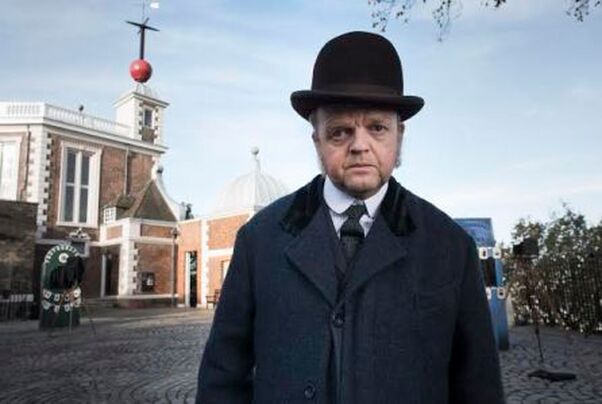
The old lady is one of several characters in Conrad’s novel who are large and immobile; only Stevie is truly agile. The Secret Agent is peopled by individuals who are constricted by their bodies, which in many cases are obese; or by their clothing. Mr Verloc, in particular, is described as almost always wrapped in his huge overcoat, even when indoors, beneath which it is sometimes possible to guess his emotion by the slight change in the posture of the body within it.
Stevie’s clothing, meanwhile, becomes bound up with his own flesh, as Inspector Heat nauseously notes as he surveys the tangle of flesh, fabric and gravel on the mortuary sheet.
Conrad’s gaze often seems to move in and out of clothing to the person beneath — as though he is attempting to gauge the interiority of the bizarre characters he has created. The body itself appears to be a clothing of the personality: more than once, Conrad refers to ‘the mortal envelope’ of Mr Verloc. The Professor carries deep within his trouser pocket the rubber ball that if squeezed, would splatter his inner self and its physical envelope over the external world. In fact, he tells Inspector Heat that if he were to detonate the device during arrest, Heat’s mortal remains would have to be buried intermingled with the Professor’s body parts — an oddly sexualised projection.
Michaelis, meanwhile, weighing 18 stone, is someone whose clothing is only just managing to contain the vast amount of flesh within. Sir Ethelred is also depicted as almost bursting out of his clothes.
Another series of images also makes reference to interiority/exteriority — to potentially permeable barriers. Windows appear fairly often at crisis moments in the narrative. Towards the end of chapter 3 Mr Verloc leans against the thin pane of his bedroom window, which is all that separates him from the dark, muddy, cold, black London street outside, with all its latent hostility towards him. The Assistant Commissioner gazes from his departmental window at the fog, rain and blackness that feels hostile through the glass. Mr Verloc goes to the window at the Embassy during his dressing down by Mr Vladimir and observes the ‘rusty’ London sunshine battling against the mist. And just before the murder, Winnie gazes out of the bedroom window, just as her husband had, one month earlier: ‘The street, silent and deserted from end to end, repelled her by taking sides with that man who was so certain of his impunity. . .her instinct of self-preservation recoiled from the depth of the fall into that sort of slimy, deep trench.’ London in The Secret Agent is like a dank, foetid aquarium, where very odd fish are going about their furtive business.
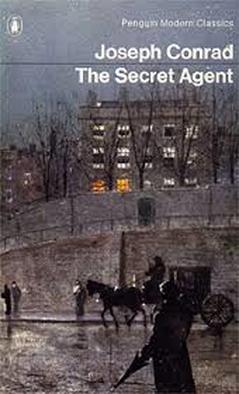
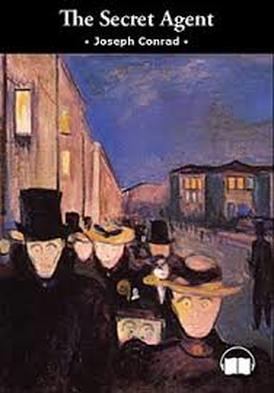 Conrad’s manipulation of the timeframe of his narrative is a stunning achievement that maximises tension and emotional impact; I am not aware of any novel before The Secret Agent that attempts this chronological sleight of hand. Chapter 3 ends with Mr Verloc and Winnie in bed as she worries about Stevie and he worries about how to bring off Mr Vladimir’s bombing. But chapter 4 opens in the Silenus restaurant, with the news vendors crying outside in the streets about the Greenwich bombing. So we have suddenly been brought very quickly to what would conventionally be the climax of a narrative; and through the conversation between Ossipon and the Professor, the reader is lulled into thinking that it is Mr Verloc who has been killed by his own bomb. For the Professor tells Ossipon that he had sold his explosives to Mr Verloc; and it has been established in the reader’s mind that Mr Verloc is bulky and cumbersome — and therefore is probably clumsy too.
Conrad’s manipulation of the timeframe of his narrative is a stunning achievement that maximises tension and emotional impact; I am not aware of any novel before The Secret Agent that attempts this chronological sleight of hand. Chapter 3 ends with Mr Verloc and Winnie in bed as she worries about Stevie and he worries about how to bring off Mr Vladimir’s bombing. But chapter 4 opens in the Silenus restaurant, with the news vendors crying outside in the streets about the Greenwich bombing. So we have suddenly been brought very quickly to what would conventionally be the climax of a narrative; and through the conversation between Ossipon and the Professor, the reader is lulled into thinking that it is Mr Verloc who has been killed by his own bomb. For the Professor tells Ossipon that he had sold his explosives to Mr Verloc; and it has been established in the reader’s mind that Mr Verloc is bulky and cumbersome — and therefore is probably clumsy too.
It turns out, further on in Chapter 4, that one month has passed between Chapter 3 and Chapter 4 — that’s the one month that Mr Vladimir gave Mr Verloc to bring about an anarchist outrage.
When the realisation comes, ten pages later, who the real victim is, it is shocking and moving. The mysteries that remain for the reader are how Mr Verloc has inveigled Stevie into doing what he wants; how Winnie will find out, and whether she will discover Mr Verloc’s role — and, if she does, what she will do about it.
Chapter 8 opens back in our original time-frame — Stevie is still alive, and we now learn the back story to Winnie and Stevie’s childhood and the decision by the old lady not to be a burden to Mr Verloc and Winnie by placing herself in the licensed victuallers’ almshouses. Her extraordinary journey in the cab to south London has no useful plot role, but the interaction with the horse and the cab-driver shows us the empathy Stevie feels for all suffering things — ‘The tenderness of his universal charity’ (which is notably lacking in all the individuals on the two main ‘sides’ of the political argument). And we now see this in the knowledge that he will shortly be headed for a terrible death.
Halfway through chapter 9, the accident in Greenwich Park occurs, and we are now back again in the one-month-later timeframe in which chapter 3 is set.
The catastrophe takes place on the Meridian; and many characters meditate on the nature of time. Inspector Heat, looking down at Stevie’s remains, thinks about how such a quick death might nevertheless have felt of long duration to the sufferer; he then goes on to recall an article he has read about dreams that happen in a second but which seem to the dreamer as though aeons are passing.
As the cab carries Stevie, Winnie and the old lady down Whitehall to south London, time is described as seeming to stand still as the tired old horse drags the carriage past the Treasury building. The Assistant Commissioner takes precisely seven minutes to give his report to Sir Ethelred; and the huge marble clock behind him is measuring this with ‘a ghostly evanescent tic’.
Time passes at different speeds for different individuals in the book; and the narrative slows right down during certain conversations and interactions, and speeds up as the events of several days are packed into one paragraph. The slowing down happens most noticeably in the run-up to Winnie’s murder of her husband. She suddenly becomes aware that it was 25 to 9 when when she went upstairs to get her things, and is 10 to 9 when she has stabbed him to death; she hears a ticking and is confused, because the parlour clock is a silent one — then she realises it is the blood dripping on to the floor.
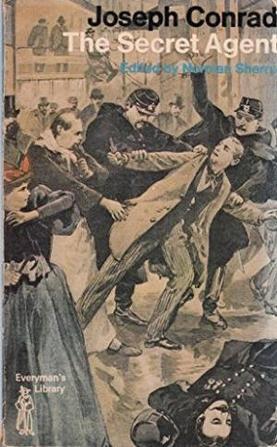
 Genius doesn’t need to draw directly from life. However, Conrad was referencing certain characteristics of the following actors in the world of political agitation in London at the turn of the century.
Genius doesn’t need to draw directly from life. However, Conrad was referencing certain characteristics of the following actors in the world of political agitation in London at the turn of the century.
Mr Verloc was partly inspired by HB Samuels — the brother-in-law of the 1894 Greenwich Park bomb victim (and perpetrator?) Martial Bourdin. It is believed that far from being an anarchist, Samuels was in fact an agent provocateur in the pay of Scotland Yard. Even those who did not believe him to have been an infiltrator disliked him. Anarchist Louise Sarah Bevington wrote that he was ‘about the most rubbishy character possible…. The keynotes of his character are vanity and vindictiveness.’ Anarchist George Cores, meanwhile, described Samuels as ‘simply an advocate of violence — by others’. Samuels was walking with Bourdin shortly before the explosion, and despite Samuels being quite open about this fact, the police did not interview him. When they raided the anarchists’ Club Autonomie in Fitzrovia, Samuels was not arrested, though many innocent members were. (The Autonomie was firstly at 32 Charlotte Street and then moved to 6 Windmill Street, off Tottenham Court Road.)
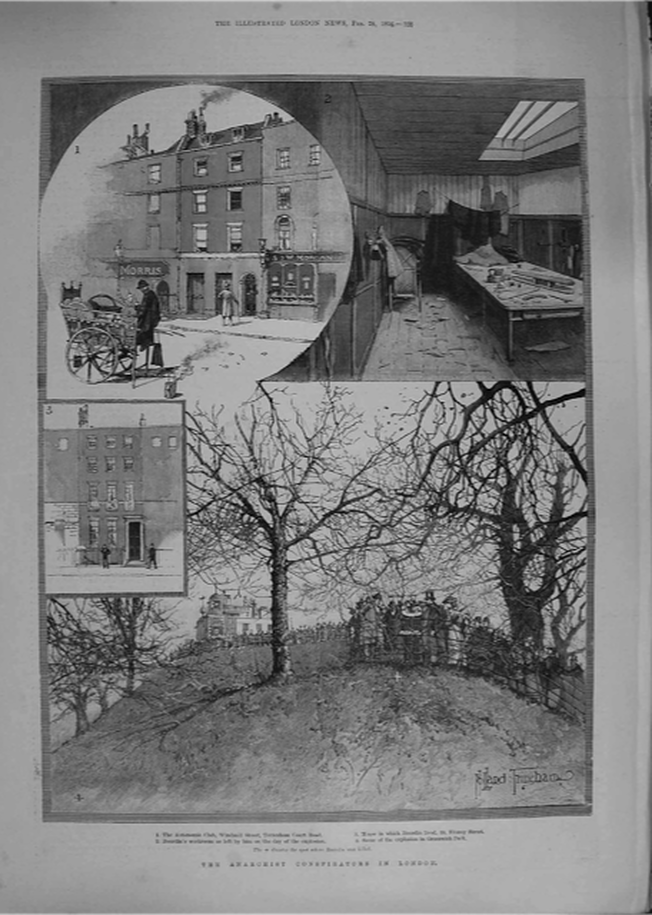
Bourdin was found at 4.40pm in a kneeling position in Greenwich Park, his left hand blown off and with appalling abdominal injuries, of which he died soon afterwards. He had been carrying a bomb in a brown paper parcel. No one has ever discovered if the bomb was intended for a genuine London outrage; or was to be sent off to Paris by an intermediary, or if Bourdin even knew what he was carrying.
Mr Verloc was also partially inspired by Auguste Coulon, a secret agent used by Scotland Yard’s Inspector William Melville to infiltrate anarchist networks. He sold copies of the bomb-making manual L’Indicateur Anarchiste and produced nitro-glycerine in his lodgings. ‘No voice speaks so loud as dynamite,’ Coulon wrote in the socialist-anarchist magazine The Commonweal in 1891. He attempted to lure English anarchists Frank Kitz and Charles Mowbray into acts of violence, and both men refused. Coulon fitted up a number of Anarchists in 1892 in what became known as ‘The Walsall Affair’. In spite of evidence of their innocence, six political activists from Walsall in the West Midlands were charged with bomb-making and four were found guilty and sentenced to between six and ten years’ penal servitude.
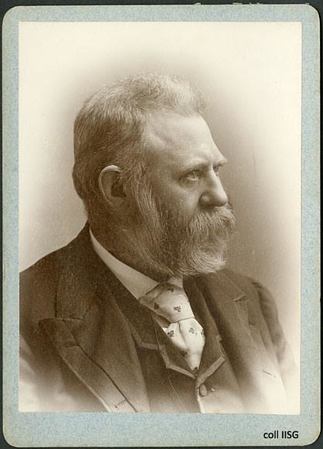

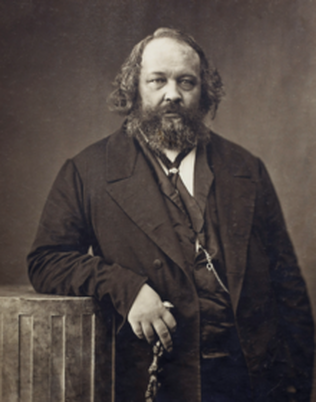
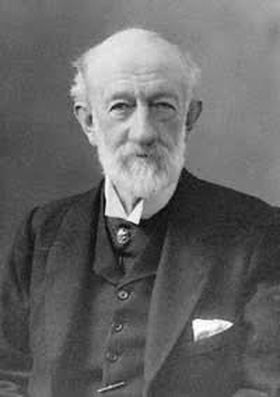
Karl Yundt was partially inspired by Johann Most, with some of the philosophy of Russian anarchist Mikhail Bakunin. Most was an embittered German exile but was nothing like as unpleasant as Yundt. He was in and out of prison in Germany and subsequently Britain, in the latter for praising in print the assassination of Czar Alexander II in 1881. He was the author of the incendiary publication The Beast of Property, plus a guide on how to make bombs at home. He fled to America and died there in 1906. He was jointly responsible for starting the bitter Bruderkrieg — the ‘brothers’ war’ that tore the London anarchists apart.
Michaelis has shades of Fenian activist Michael Davitt, though Michaelis’s philosophy was inspired by Russian mutualist anarchist Prince Peter Kropotkin, while his weight problem was Mikhail Bakunin’s. Davitt was Charles Stewart Parnell’s deputy in Irish nationalist agitation and served seven years for arms smuggling; he was paroled in 1877 and was described as having the same post-prison strength, calm and lack of bitterness as Conrad attributes to Michaelis. Mikhail Bakunin went into prison as a slender ‘dandy’ (according to one report) but came out 12 years later weighing 20 stone.
The Professor blends some of the outlook of Friedrich Nietzsche with aspects of Fenian Luke Dillon, aka ‘Dynamite Dillon’, who wore a belt of explosives that he declared he would detonate with his lit cigar if he were ever to be arrested.
Comrade Ossipon shares some traits with the actually much more likeable Kropotkin. Ossipon is often to be found quoting the physiognomical theories of Italian criminologist Cesare Lombroso. Ossipon’s own appearance, though, reveals him to be highly delinquent himself.
The Assistant Commissioner is Robert Anderson. Dr — later Sir — Robert Anderson was a barrister turned CID chief, who was an expert on political crime and on Fenianism in particular. He was a long-term adviser to the Home Office. His wife, Lady Agnes Moore, was the daughter of the Eighth Earl of Drogheda, and may have inspired the Great Lady at the heart of the social and political world of The Secret Agent.
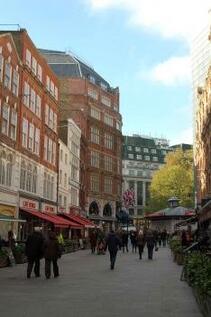
Inspector Heat was partly drawn from Chief Inspector William Melville, an Irishman who had risen through the ranks at Scotland Yard and had completely infiltrated Fenian groups and Anarchists, with many informers working for him. When he took an American journalist to a fancy dress ball at Club Autonomie, the anarchists greeted him warmly by name.
The imaginary Brett Street is today’s Irving Street (formerly Green Street), a short thoroughfare that links Charing Cross Road to Leicester Square at the latter’s south-east corner.
It may, or may not, have been named Brett Street by Conrad after the policeman Charles Brett who was murdered by Fenians in Manchester in 1867.
Sarah Wise teaches 19th and 20th century social history and literature to both undergraduates and adult learners.She is the author of The Blackest Streets: The Life and Death of A Victorian Slum (Bodley Head). Her website is sarahwise.co.uk
Further Reading
Butterworth, Alex, The World That Never Was: A True Story of Dreamers, Schemers, Anarchists and Secret Agents, 2010. Excellent overview of the milieu of the late 19th/early 20th-century anarchists.
Conrad, Joseph, The Informer, 1906. A short story that introduced the character of The Professor.
Cook, Andrew, M: M15’s First Spymaster, 2004. An account of William Melville’s working life as surveillance chief overseeing London’s fin de siècle/Edwardian Anarchists and Fenians.
Davies, Laurence, and Karl, Frederick R (eds), The Collected Letters of Joseph Conrad, 9 vols, 1983-2007.
Hart, W C, Confessions of an Anarchist, 1906. Conrad is known to have read this volume.
Latouche, Peter, Anarchy! An Authentic Exposition of the Methods of Anarchists and the Aims of Anarchism, 1908. Potted biographies of Bakunin, Proudhon, Kropotkin and others.
McIntyre, Patrick, ‘Twenty-Five Years of Detective Life’, serialised in Reynolds News, 1895.
Meredith, Isabel (pseudonym of Helen and Olivia Rossetti), A Girl Among the Anarchists, 1903. Enjoyable, easy-read novel that also takes the Martial Bourdin incident as its starting point.
Mulry, David, ‘Popular Accounts of the Greenwich Bombing and Conrad’s The Secret Agent’, Rocky Mountain Review of Language and Literature, 54.2, 2000. A fresh look at the written and oral sources that Conrad may have used.
Quail, John, The Slow Burning Fuse: The Lost History of the British Anarchists, 1978.
Watt, Ian, The Secret Agent: A Casebook, 1973. Fantastic compendium of contemporary reviews of Conrad’s novel, plus modern academic essays on same.
Video clip online: ‘Greenwich Degree Zero’ by Rod Dickson and Tom McCarthy
